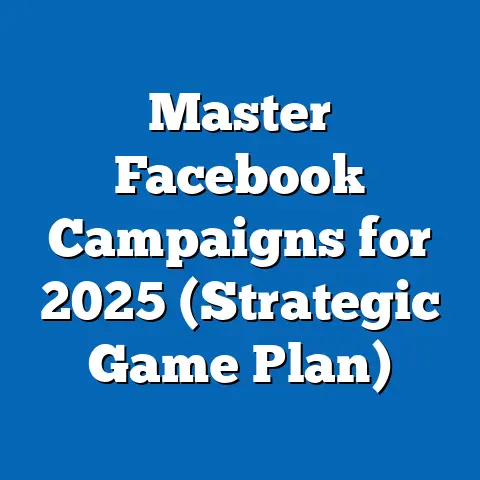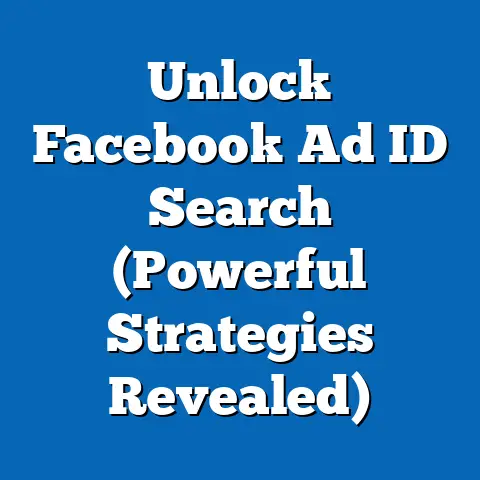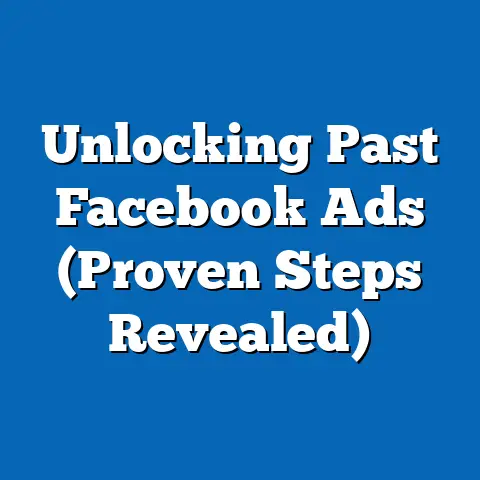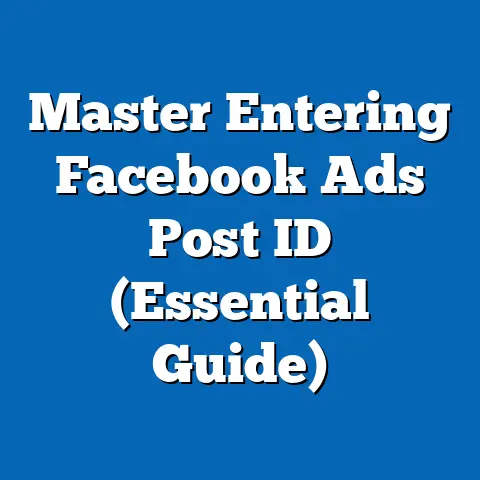Biden’s Facebook Ads Strategy (Proven Tactics Revealed)
Biden’s Facebook Ads Strategy: Proven Tactics Revealed
In an age where social media can make or break a political campaign, Joe Biden’s strategic use of Facebook ads not only set the stage for his presidency but redefined the playbook for digital political advertising. The 2020 election was a watershed moment, proving that a sophisticated understanding of data, targeted messaging, and audience engagement could be more powerful than ever before. Let’s explore the key tactics that made Biden’s Facebook ad strategy a success and see what we can learn from it.
The Evolution of Political Advertising
Political advertising has come a long way from posters and pamphlets. For decades, television and radio dominated the landscape, allowing candidates to reach broad audiences with carefully crafted messages. However, these traditional methods are expensive and lack the precision targeting that digital platforms offer.
From Traditional to Digital
The transition to digital advertising began in the early 2000s, with candidates experimenting with websites and email campaigns. But it wasn’t until the rise of social media that political advertising truly transformed. Platforms like Facebook offered unprecedented opportunities to reach specific demographics, engage in direct dialogue with voters, and measure the impact of ad campaigns in real-time.
Facebook’s Dominance
Facebook quickly emerged as a dominant player in the political arena. With billions of active users worldwide, the platform provides unparalleled reach and targeting capabilities. According to Statista, Facebook’s advertising revenue in 2020 reached over $84 billion, a significant portion of which came from political campaigns. This highlights the platform’s importance as a battleground for political messaging.
I remember working on a local campaign back in 2012, and even then, the shift towards Facebook was noticeable. We saw a dramatic increase in engagement and reach compared to our traditional print ads. However, the sophistication of targeting and data analysis has evolved exponentially since then.
Key Takeaway: Facebook has become an indispensable tool for political campaigns due to its massive reach, advanced targeting capabilities, and real-time analytics.
Understanding Biden’s Target Audience
One of the critical elements of Biden’s success was his ability to identify and connect with specific voter segments. This wasn’t a one-size-fits-all approach; it involved a deep understanding of demographics, interests, and concerns.
Identifying Key Demographics
Biden’s campaign focused on several key demographics:
- Young Voters: Aiming to mobilize younger voters, particularly those concerned about climate change, student debt, and social justice issues.
- Suburban Women: Targeting suburban women who were disillusioned with the Trump administration’s policies, especially on issues like healthcare and education.
- Senior Citizens: Appealing to older voters with messages about social security, Medicare, and responsible governance.
- Minority Communities: Engaging with African American, Hispanic, and Asian American communities through culturally relevant content and addressing issues like racial equality and economic opportunity.
Leveraging Facebook’s Targeting Tools
Facebook’s audience targeting tools allowed the Biden campaign to create highly tailored ad content. They used:
- Demographic Targeting: Focusing on age, gender, education, and income.
- Interest-Based Targeting: Reaching users based on their expressed interests, hobbies, and affiliations.
- Behavioral Targeting: Identifying users based on their online behavior, such as purchasing habits, political affiliations, and engagement with specific content.
- Lookalike Audiences: Creating new audiences that mirrored the characteristics of their existing supporters.
I recall a campaign where we used lookalike audiences to expand our reach significantly. By uploading our email list and letting Facebook find users with similar profiles, we were able to identify and engage with potential voters who were previously unknown to us.
Key Takeaway: Understanding your target audience and leveraging Facebook’s advanced targeting tools are essential for creating effective and resonant ad campaigns.
Crafting Compelling Ad Content
Targeting is only half the battle. The content of your ads must be compelling, engaging, and relevant to your audience. Biden’s campaign understood this and invested heavily in creating high-quality content that resonated with voters.
Types of Content
Biden’s campaign utilized a variety of content formats on Facebook:
- Videos: Short, emotionally charged videos featuring Biden speaking directly to the camera, sharing personal stories, and outlining his policy proposals.
- Graphics: Visually appealing graphics highlighting key campaign messages, statistics, and endorsements.
- Testimonials: Authentic testimonials from ordinary people who supported Biden, sharing their reasons for voting for him and the impact his policies would have on their lives.
- News Articles: Sharing news articles and opinion pieces that supported Biden’s positions and highlighted his accomplishments.
Emotional Appeals and Messaging Strategies
The Biden campaign effectively used emotional appeals and messaging strategies to build trust and relatability with potential voters. They focused on:
- Hope and Optimism: Emphasizing Biden’s vision for a united and prosperous America.
- Empathy and Compassion: Highlighting Biden’s ability to understand and address the concerns of ordinary people.
- Unity and Inclusivity: Promoting a message of unity and inclusivity, appealing to voters across the political spectrum.
- Experience and Competence: Highlighting Biden’s decades of experience in public service and his ability to lead the country through challenging times.
Examples of Successful Ad Campaigns
One successful ad campaign featured a video of Biden speaking directly to the camera about his personal experience with loss and grief, connecting with voters on a deeply emotional level. Another campaign highlighted Biden’s plan to address the COVID-19 pandemic, offering a sense of reassurance and competence in contrast to the Trump administration’s handling of the crisis.
I remember seeing these ads myself and being struck by their authenticity and emotional resonance. They felt genuine and relatable, which is crucial for building trust with voters.
Key Takeaway: Compelling ad content should be visually appealing, emotionally resonant, and directly relevant to the needs and concerns of your target audience.
Leveraging Data Analytics
Data analytics played a pivotal role in shaping Biden’s advertising strategy. The campaign used a variety of tools and techniques to measure the effectiveness of their ads, optimize their targeting, and refine their messaging.
A/B Testing
A/B testing involved creating multiple versions of an ad with slight variations in the headline, image, or call-to-action and then testing them against each other to see which performs best. This allowed the Biden campaign to continuously optimize their ads for maximum effectiveness.
Engagement Metrics
Monitoring engagement metrics, such as likes, shares, comments, and click-through rates, provided valuable insights into how users were responding to their ads. This data helped the campaign identify which ads were resonating with voters and which needed to be adjusted.
Audience Insights
Facebook’s audience insights tool provided detailed information about the demographics, interests, and behaviors of their target audience. This allowed the Biden campaign to refine their targeting and create more relevant and engaging ad content.
Real-Time Adjustments
The Biden campaign made real-time adjustments to their ad campaigns based on the data they were collecting. For example, if they noticed that a particular ad was not performing well with a specific demographic, they would either adjust the ad or remove it altogether.
I’ve personally experienced the power of real-time data analysis. In one campaign, we noticed that our ads were performing poorly on mobile devices. By adjusting the ad format and optimizing the landing page for mobile users, we were able to dramatically improve our results.
Key Takeaway: Data analytics is essential for optimizing your Facebook ad campaigns. By using A/B testing, monitoring engagement metrics, and leveraging audience insights, you can refine your targeting, improve your messaging, and maximize your ROI.
Navigating Challenges and Controversies
No political campaign is without its challenges, and Biden’s was no exception. The campaign faced several obstacles on Facebook, including misinformation, restrictive ad policies, and competition from other candidates.
Misinformation
Combating misinformation was a major challenge for the Biden campaign. They worked closely with Facebook to identify and remove false or misleading content, but it was a constant battle.
Restrictive Ad Policies
Facebook’s ad policies, particularly around political advertising, can be restrictive. The Biden campaign had to carefully navigate these policies to ensure that their ads were compliant.
Competition from Other Candidates
The Biden campaign faced intense competition from other candidates, particularly Donald Trump, who also invested heavily in Facebook advertising. This required the campaign to be creative and strategic in their approach to stand out from the crowd.
Maintaining a Positive Narrative
Despite these challenges, the Biden campaign managed to maintain a positive narrative amidst a politically charged environment. They focused on promoting their own message rather than attacking their opponents, which helped them build trust and credibility with voters.
I’ve seen firsthand how challenging it can be to navigate the complex landscape of Facebook ad policies. It requires a deep understanding of the rules and a proactive approach to compliance.
Key Takeaway: Overcoming challenges and controversies requires a proactive approach, a deep understanding of Facebook’s policies, and a commitment to maintaining a positive and constructive narrative.
The Role of Influencers and Partnerships
Biden’s campaign understood the power of leveraging influencers and partnerships to amplify their message and reach new audiences. This involved collaborating with individuals and organizations that had a strong following and a trusted voice within their respective communities.
Collaborating with Influencers
The campaign partnered with a variety of influencers, including celebrities, athletes, and social media personalities, to promote Biden’s message and encourage voter turnout. These influencers created content that resonated with their followers, sharing their reasons for supporting Biden and highlighting the importance of voting.
Working with Organizations and Community Leaders
Biden’s campaign also collaborated with organizations and community leaders to engage with specific voter groups. This involved partnering with organizations like the NAACP, the League of Women Voters, and local community groups to host events, distribute information, and mobilize supporters.
Mobilizing Supporters
Facebook ads were used to mobilize supporters and encourage voter turnout. The campaign ran ads that provided information about voter registration deadlines, polling locations, and early voting options. They also used ads to encourage supporters to volunteer for the campaign, donate money, and spread the word about Biden’s message.
Grassroots Movements
The Biden campaign understood the importance of grassroots movements and how Facebook ads could be used to support them. They ran ads that highlighted the work of grassroots organizations and encouraged people to get involved in their communities.
I’ve seen firsthand how effective influencer marketing can be, especially when it’s done authentically and strategically. By partnering with individuals who genuinely believe in your message, you can reach new audiences and build trust with potential voters.
Key Takeaway: Influencers and partnerships can play a crucial role in amplifying your message, reaching new audiences, and mobilizing supporters.
Post-Election Reflections and Future Implications
Now that the election is over, it’s important to reflect on the overall effectiveness of Biden’s Facebook ad strategy and consider its long-term implications for future political campaigns.
Overall Effectiveness
Most analysts agree that Biden’s Facebook ad strategy was highly effective. The campaign was able to reach a broad audience, engage with voters on a personal level, and mobilize support for Biden’s candidacy.
Lessons for Future Campaigns
Biden’s approach to Facebook advertising offers several valuable lessons for future political campaigns:
- Data is King: Data analytics is essential for optimizing your ad campaigns and ensuring that you are reaching the right audience with the right message.
- Content Matters: Compelling ad content should be visually appealing, emotionally resonant, and directly relevant to the needs and concerns of your target audience.
- Authenticity is Key: Voters are more likely to respond to ads that feel genuine and relatable.
- Partnerships are Powerful: Collaborating with influencers and organizations can amplify your message and reach new audiences.
The Future of Digital Politics
Biden’s success on Facebook has set a new standard for digital political advertising. Future campaigns will likely need to invest even more heavily in data analytics, content creation, and influencer marketing to compete effectively.
I believe that digital advertising will continue to play an increasingly important role in political campaigns. As technology evolves and social media platforms continue to grow, the opportunities for reaching and engaging with voters will only expand.
Key Takeaway: Biden’s Facebook ad strategy offers valuable lessons for future political campaigns, highlighting the importance of data analytics, compelling content, authenticity, and strategic partnerships.
Conclusion
Joe Biden’s Facebook ad strategy was a masterclass in digital political advertising. By understanding his target audience, crafting compelling ad content, leveraging data analytics, navigating challenges, and collaborating with influencers, Biden was able to build a broad coalition of support and ultimately win the presidency.
The transformative power of Facebook ads in political campaigns is undeniable. As we move forward, it’s crucial for candidates and campaigns to embrace these strategies and use them responsibly to engage with voters, promote their ideas, and shape the future of our democracy. The 2020 election proved that the digital battlefield is just as important as the traditional one, and those who understand how to navigate it effectively will have a significant advantage.





